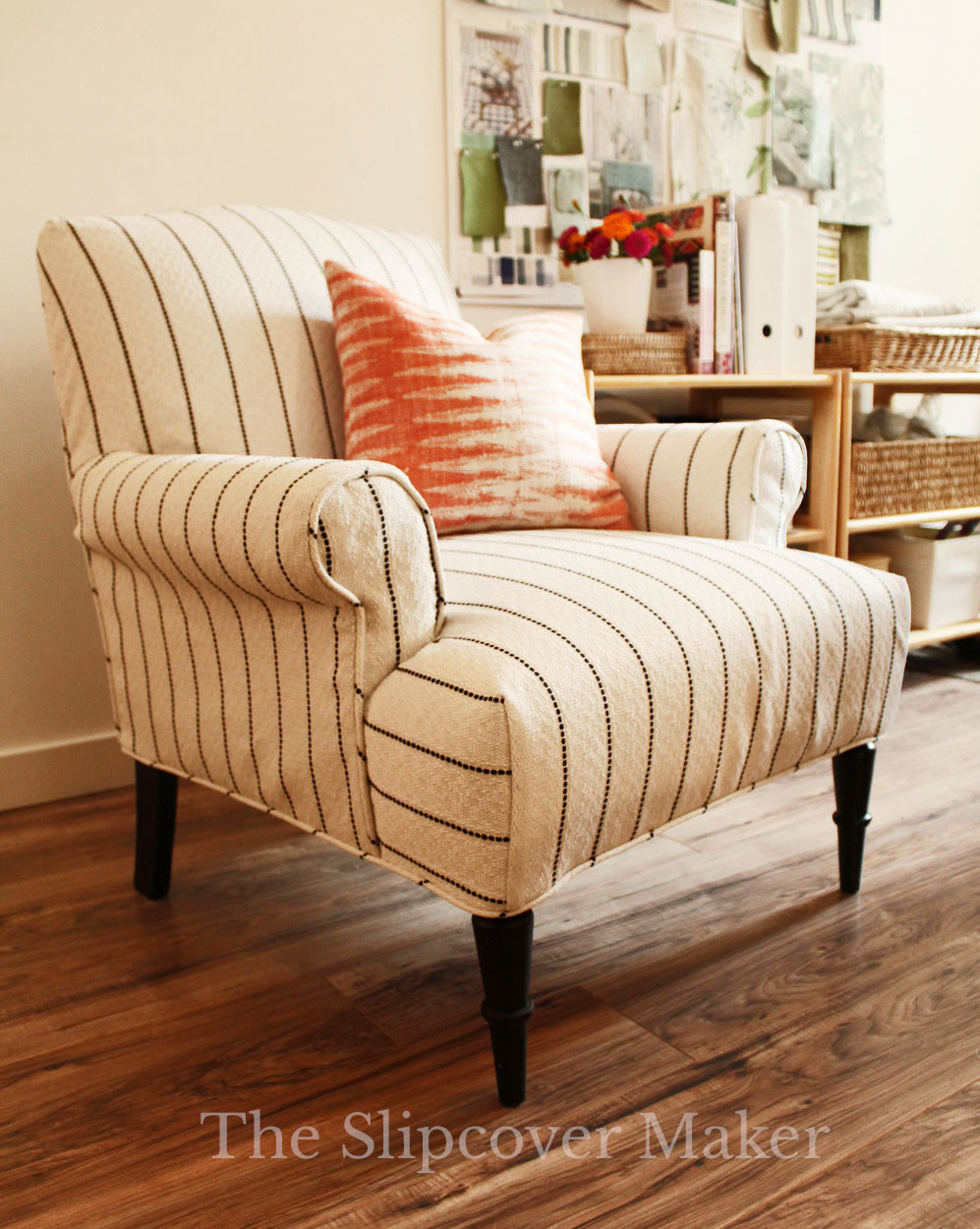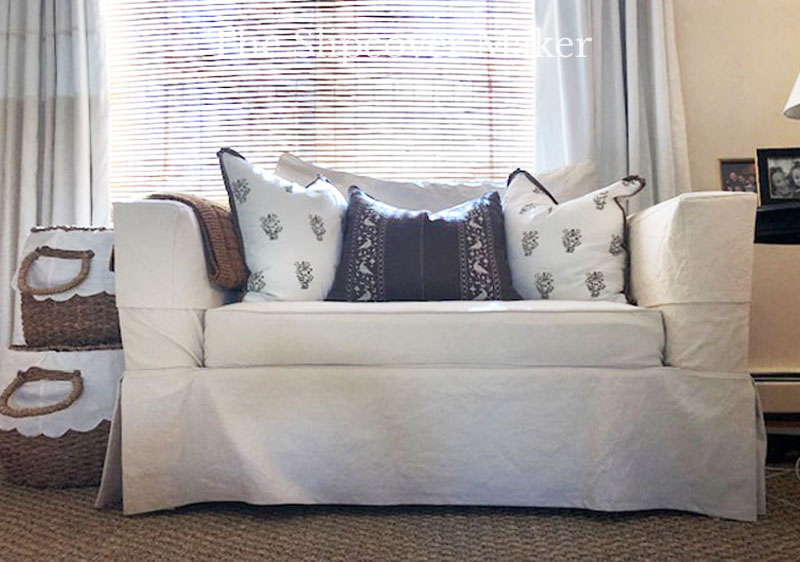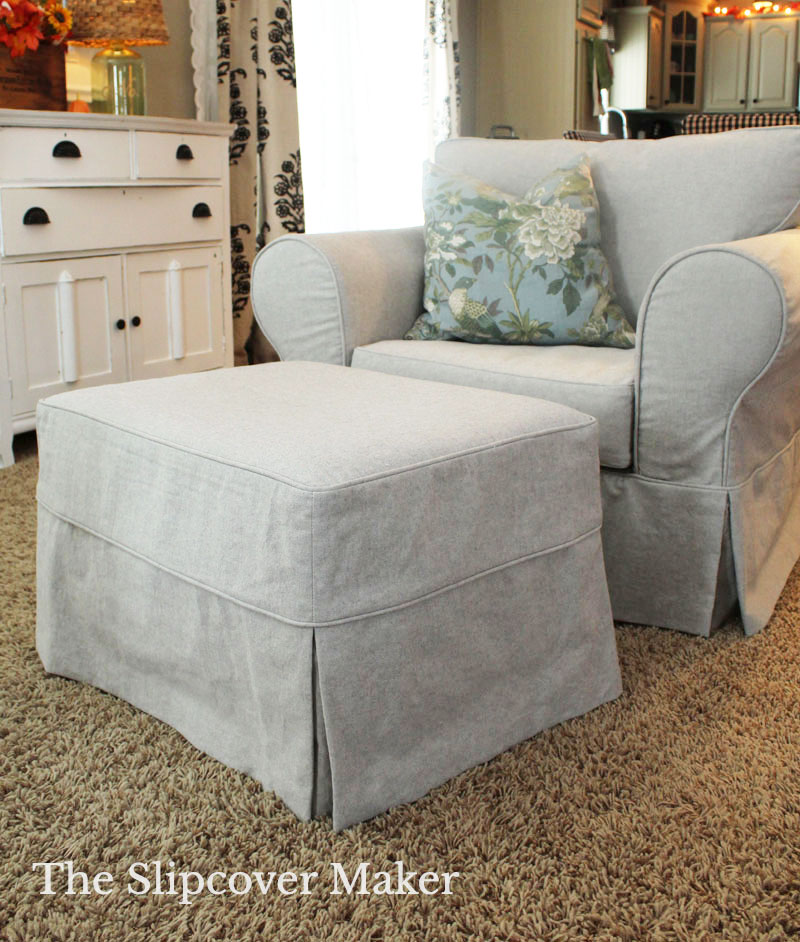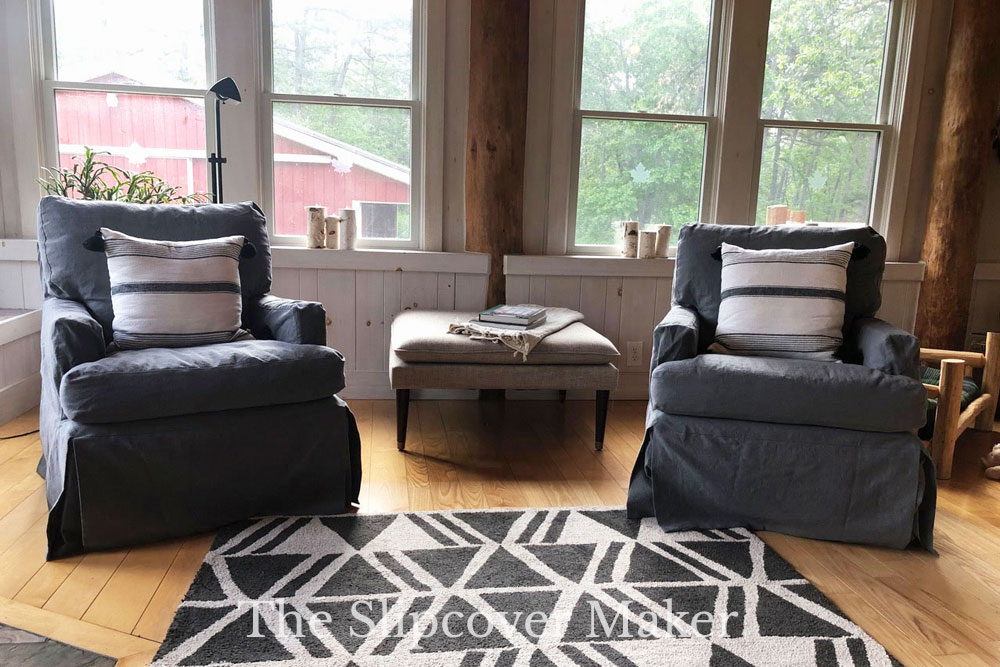20 Tips for Slipcover Success

Are you making your own slipcover or hiring a pro? Either way, there are several things to decide on before you begin your project to ensure best results. Here are 20 tips that will help you plan for slipcover success.
1. Check the overall condition of your furniture. A custom slipcover is a worthwhile investment when the cushions, springs and frame are in good shape.
2. Replace old cushions before you slipcover. If it’s time to swap out compressed foam inserts with new ones, be sure to do it prior to slipcovering to ensure the proper fit. Here are 5 things to know about choosing foam inserts.
3. Enhance your furniture’s best features. Design your slipcover to show off your furniture’s unique design elements such as arms, legs and back.
4. Choose a slipcover fit that matches your personal style and fabric choice. Loose, shabby-chic fit? Snug upholstery-like fit? Or a relaxed tailored fit?
5. Decide on slipcover details before you buy fabric. Skirt or no skirt? Contrast or self welt cord? Pattern matching? Be sure to account for the details in your yardage calculation to avoid coming up short.
6. Match your slipcover function to the fabric. When choosing fabric, consider how you will use your slipcover. For example, will it get heavy wear and frequent washing? Do you want it to be pet and/or kid friendly? Or is it intended to be decorative only?
7. Choose heavy weight fabric for hard wearing slipcovers. A washable 12 oz or 14 oz fabric that’s tightly woven and durable will hold up best for slipcovers that get frequent use and wash. Here’s how I choose the best fabric for my project.
8. A medium weight fabric is fine for slipcovers that get moderate use. A slipcover made in a washable 8 oz to 10 oz fabric, densely woven and stable, will hold up best to moderate wear and one to two washings per year.
9. Opt for a densely woven fabric for best coverage. Make sure your slipcover fabric is woven tight enough to cover your upholstery color. You can test it by holding it up to the light and also laying it over your furniture. If you can see through it, don’t use it.
10. Test a one yard cut before buying yardage. Wash and dry it to determine the shrinkage, pilling and any color change. Throw it over your furniture to check the coverage, the overall look and hand-feel.

11. Be a savvy fabric shopper. Don’t judge fabric by its price. Fabric priced at $20 per yard isn’t necessarily a better choice than a $10 fabric. Just as a $5 fabric isn’t really a steal if it falls apart soon after you make your slipcover. That’s why it’s important to first buy a one yard cut and test it for shrinkage, coverage and durability.
12. Opt for a neutral color fabric. To get the most out of your slipcover year round, choose a versatile neutral-tone that works with your seasonal decorating palettes.
13. Pick a timeless fabric for long-lasting design appeal. Denim, canvas, twill, woven ticking and matelasse in slipcover weights (11 to 14 oz) are classics and will add longevity to your slipcover.
14. Avoid upholstery fabric. Steer clear of fabric that is dry clean only, has a backing and a stiff hand-feel. It’s not intended for washable slipcovers.
15. Pre-shrink your fabric. If you want your slipcover to be washable without shrinking, wash and dry your yardage even if it’s labeled “washed” or “preshrunk”. Find my preshrink instructions here.

16. Save money by making your own slipcover. If you are new to pin-fitting (pattern making) use an instructional video, book or online tutorial to help you achieve a good fit. Here are some of my favorite slipcover video tutorials.
17. Save time and frustration by hiring a pro. An experienced slipcover maker can guide you in fabric selection, trouble shoot fit issues and give your slipcover a professional look and fit.
18. Make an extra set of cushion slipcovers. Seat cushions get the most wear and usually require cleaning more often than the slipcover body. A second set of cushion covers will come in handy when the originals need washing or replacement.
19. Consider arm covers. Furniture arms get handled a lot and show dirt easily. Add arm covers to keep them clean. They will be much easier to wash than your entire slipcover.
20. Clean your slipcover with care. Wash in cold water, tumble dry warm until almost dry and put on your furniture while still slightly damp. Avoid chlorine bleach.


I love the reintroduction of arm covers. I never understood why they fell by the wayside. On a white sofa, particularly, this is only area regularly necessitates a full slipcover wash because it’s easily the area that gets the most “ traffic”. They also sport such a cute, layered look. Love it!
Practical and cute. I agree, Ester!
Your posts are so informative, Karen. Thank you !
You’re welcome, Karen! I appreciate your feedback.
Love all the tips you give here Karen. Especially the one about avoiding upholstery fabrics! Most of them are so extremely expensive making it near to impossible to afford a slipcover! I like your fabric selections you offer here on your blog!
So glad you love the tips, Cindy! Thanks for reading.